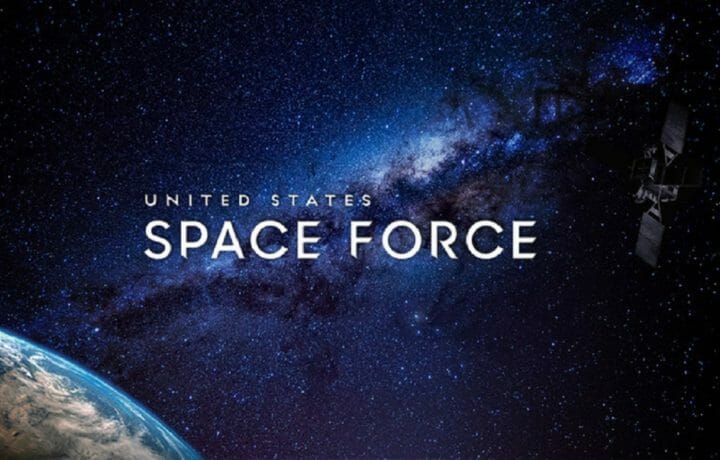Currently, the Partial Test Ban Treaty and the Outer Space Treaty place limits on the weaponization of space, but despite that fact, a number of countries – including the United States – have expanded or created military organizations focused on space. Critics have warned that the creation of the United States Space Force, the sixth and newest branch of the U.S. military, could even set off a new arms race. However, the fact remains that space is simply another area where the United States must have a military presence.
A New Warfighting Domain
Space is thus a warfighting domain – to be secured and protected by the United States Space Force – in much the same way that the land, sea and air are protected by the United States Army, Navy, Coast Guard, Marines and Air Force.
“Our modern lives depend on our space capabilities, and potential adversaries are actively attempting to exploit the benefits space provides us,” said Lt. Col. Daniel Sebeck, 319th Combat Training Squadron commander at Peterson Air Force Base, Colo. “Every day our space warfighters purposefully prepare to negate potential adversaries’ attempts to claim space superiority over us.”
New Territory Equals New Training Needs
To address potential threats, the U.S. Space Force has developed a new series of courses designed to give new space professionals warfighting mindsets to carry with them throughout their careers. The Space Force has stated that without such highly trained space professionals, it cannot effectively utilize space systems to increase joint force lethality or ensure the safety of the American public and defend against near-peer adversaries.
This week, the 319 CTS instructor cadre began teaching Space Warfighting Follow-on courses at Peterson’s Moorman Space Education and Training Center. Each course is based on a core Space Warfighting Discipline (SWD), which includes Orbital Warfare, Space Battle Management and Space Electronic Warfare.
Training Marches on Despite a Global Pandemic
Students are required to complete on-line prerequisite lessons before course start date. These are three-week courses that were designed to prepare space professionals to effectively augment theater Air Operations Centers during both exercises and in real-world operations. Moreover, the course provides both academic instruction and hands-on equipment training needed to prepare graduates to integrate air and space power in support of theater commanders.
Even with the ongoing COVID-19 pandemic, all SWF courses began in-residence as planned. Moorman SETC reported that it took important safety precautions in order to protect the student and staff, and that included evaluating the need to quarantine those individuals that traveled from out-of-state, and requiring the wearing of face masks when six foot distancing couldn’t be maintained. Class size was also limited to 10 students to maintain proper social distancing.
“With the implementation of SWD training, the U.S. Space Force is transforming the way the U.S. military develops its space warfighters and is laying the foundation for a highly trained, ready force,” Sebeck added. “The Space Force must develop a cadre of space warfighters to protect U.S. interests in space, deter aggression in, from and to space and conduct space operations. The SWF courses are the first step toward mastering and applying space warfare discipline.”
Training Goals
The courses are designed to teach space warfighters about threats and how space combat disciplines are utilized from the beginning of their career in the new service brand. Sebeck stressed that a passive mindset to tactical operations is dangerous and said that the development and integration of space professionals needs to be a cornerstone of the way that the United States fights wars.
Training Course Beginnings
Stakeholder units from across the Space Force were solicited for input in developing the courses including what inbound operators should know, value and be able to do. The 319th CTS’ team of instructors also developed the training task lists from those inputs, coordinated them through each of the wings and the Space Force HQ and then built final objective lists that guided the development of individual lessons.
The courses’ curriculum was further developed by a mix of active duty, Reserve and contractor personnel. The instructor cadre will also consist primarily of active duty, contractors, civilians and Reserve personnel from the 42nd Combat Training Squadron with extensive expertise in space operations.



